No more mystery for the plant-meat brand. The science, history, marketing and future of Beyond Meat.
If I could be known as anything, it would be an expert on branding. But a close second would be an environmentalist; I am very concerned about global warming. I have an electric car, I have volunteered for the Green Party of Canada, and I do what I can to reduce my family’s impact.
Imagine how shocked I was when I learned that somewhere between 14.5% – 51% of man’s contribution to global warming comes from livestock directly or from feeding them. Transportation only accounts for 23% to 33%. Most of us want to move to lower-emission vehicles or electric cars, so why are we not trying to stop eating meat?
The answer is that a lot of people are. In 2017, approximately 3.8% to 6% of people claimed to be vegetarian or vegan, compared to 1% in 1970. People are cutting their meat consumption for environmental, health, religious, and ethical reasons. The market for vegan alternatives to dairy is expected to grow to $37.5 billion in 2025, and the market for vegan options to meat will increase to $3 billion in 2024. One of the companies that have emerged to meet this demand is Beyond Meat.
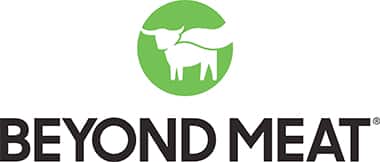
What is the Beyond Meat company? Beyond Meat is a Los Angeles based food processor that makes plant-based alternatives to meat. They make the Beyond Burger, Beyond Beef, and Beyond Sausage products for retail and foodservice.
Their growth has been explosive in the last few years. Beyond Meat has a market cap of $9.42 billion US (as of July 2019). Beyond Meat expects it’s revenue to total $210 million US, more than double last years numbers. The company and has yet to turn a profit, so investors must believe that the growth will continue.
I wanted to discuss Beyond Meat because they have an exciting brand strategy. They are promoting their brand in both retail and restaurants; this creates a synergy making the brand more valuable. When you see that bull-in-a-cape logo on a menu board or in a refrigerator, you know it’s not going to taste much better than the veggie-burger of the past. The Beyond Meat products have distinguished themselves from those veggie burgers which were about as tasty as the box it came in.
What is beyond meat made of?
Beyond Meat extracts and realigns the proteins of peas, rice, and beans to recreate the structure of the meat.
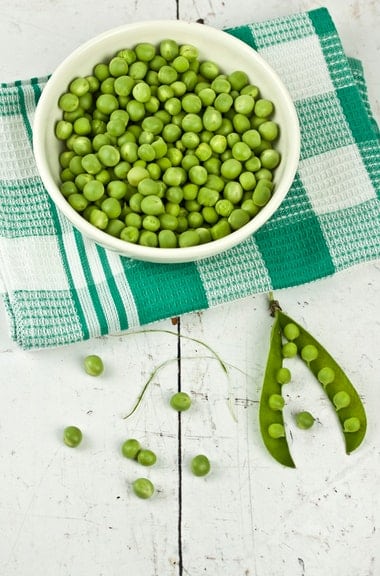
Beyond Meat is made of ingredients derived from plants such as pea protein, rice protein, mung bean protein, coconut oil, and canola oil.
The Beyond Meat products take proteins from peas, rice, and beans and arrange them how proteins would be arranged in meat. Proteins are long, complex molecules; they are are the molecules that makeup muscle fibers.
Beyond Meat founder and CEO, Ethan Brown believes that there is nothing special about how animals arrange these molecules naturally. The fibrous texture of meat can be replicated with plant proteins with the right process.
We are a ways away from replicators of Star Trek which lay down food molecule by molecule. But, Beyond Meat has developed a process of heating, cooling, and pressure process to extract the proteins and an extruding and cooking process to lay out the proteins to mimic animal meat. There is no more processing in Beyond Meat than a loaf of bread.
The “meat” derived from this process is shaped into forms we know: burger patties, meatballs, sausages, crumbles, and more. Beyond Meat focuses on beef and pork alternatives.
Beyond Meat has discontinued their chicken strips product, Beyond Chicken. The company started by replicating chicken, but the beef-alternative product eclipsed the chicken product. Founder Ethan Brown was always upfront that they were not quite up to snuff; it was indistinguishable when in a dish as an ingredient, but tasted off when served by itself.
Beyond Meat beef-alternative ingredients:
Water, Pea Protein Isolate, Expeller-Pressed Canola Oil, Refined Coconut Oil, Rice Protein, Natural Flavors, Cocoa Butter, Mung Bean Protein, Methylcellulose, Potato Starch, Apple Extract, Salt, Potassium Chloride, Vinegar, Lemon Juice Concentrate, Sunflower Lecithin, Pomegranate Fruit Powder, Beet Juice Extract
The Beyond Meat company facts
The plant-based meat substitutes company that seems to be on the right side of history.
What is the Beyond Meat tagline?
Beyond Meat – The Future of Protein™
Who founded Beyond Meat?
Ethan Brown founded Beyond Meat in Los Angeles in 2009. Before that, Ethan Brown was an analyst for the energy sector.
What is Beyond Meat’s mission statement?
“By switching from animal to plant-based protein sources, Beyond Meat seeks to improve problems associated with livestock: human health, climate change, constraints on natural resources, and animal welfare.” As stated on their website.
What is Beyond Meat’s brand promise?
Beyond Meat’s brand promise is to enable people to feel good about enjoying the meat they love by removing the adverse effects on their health, planet, and animal welfare.
In Beyond Meat’s SEC filing, they state: “We believe our brand commitment, “Eat What You Love,” encourages consumers to eat more, not less, of the traditional dishes they enjoy by using our products, while feeling great about the health, sustainability, and animal welfare benefits associated with consuming plant-based protein.”
What is Beyond Meat’s marketing agency?
Beyond Meat’s agency of record is Stun Creative.
Is Beyond Meat a public Company?
Yes. Beyond Meat is traded on the NASDAQ stock exchange under the ticker symbol BYND.
It became a public company in 2019. Beyond Meat’s Initial Public Offering (IPO) was on May 2, 2019, where it grew 167% on the day.
Who invested in Beyond Meat?
Beyond Meat raised $122 million in seven rounds of financing over the years before going public. The company had famous investors such as the founders of Twitter and Medium, Evan Williams and Biz Stone, as well as Bill Gates, founder of Microsoft. Ethan Brown credits Kleiner Perkins Caufield Byers for the funding to get them off the ground and the introductions to the famous investors.
Beyond Meat investors:
- Kleiner Perkins Caufield Byers
- Evan Williams (co-founder of Twitter and Medium)
- Biz Stone (co-founder of Twitter and Medium)
- John Salley (NBA champion and vegan)
- Jungju Kim
- Craig Shapiro
- Obvious Ventures
- Bruce Friedrich (New Crop Capital – specialists in plant technologies)
- Bill Gates
- Kevin Boylan (specialist in plant technologies)
- Shaun Fanning
- J Skyler Fernandes
- Galia Kut
- Frank Willemsen
- Drue Freeman
- Chris Ovitz
- Johnny Ream
- AJ Dos Santos
- Vipul Ved Prakash
- Jennifer Zhou
- Morgan Blackman
- Elijah Dume
- Clifford Tong
- Alex Ward
- DNS Capital
- S2G Ventures (Seed 2 Growth)
- Morgan Creek Capital
- Tyson Foods
- GreatPoint Ventures
The Beyond Meat Story
How Ethan Brown pivoted to tackle the real contributor to climate change.
The story of Beyond Meat is fascinating. In short, Ethan Brown, an energy sector executive, saw a study of how livestock was the true problem to solve to spare us from global warming. He found Fu-hung Hsieh and Harold Huff, researchers who had been working on synthesizing animal meat with the building blocks provided by plants. Together they experimented to create a chicken-like product which became Beyond Chicken and was available in Whole Foods.
They continued development and found an even more viable alternative to beef. They started making Beyond Beef and Beyond Burgers which were far more popular than the chicken product. Beyond Meat expanded into other retailers and countries and started to be traded on the stock market
The cultural and ecological environment
Taking on a culture that is obsessed with meat even to its detriment.
Our culture has an obsession with meat. For tens of thousands of years, meat consumption has been associated with wealth and health. We have celebrated the consumption of meat back to hunter-gatherer times. We associate health and fitness with eating meat: the more meat you eat, the more muscle you have (that’s not true, but we believe it as a culture).
This obsession has resulted in a monstrous industry. The meat industry will be worth $7.3 trillion in 2025 and 56 billion animals are being raised and slaughtered for meat every year.
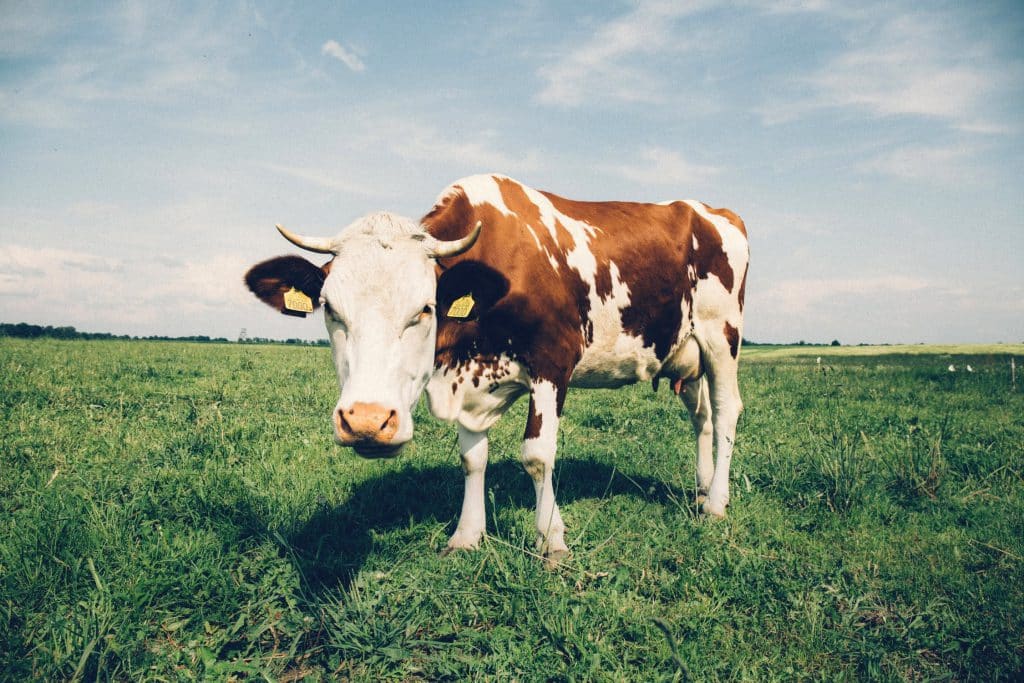
With more people are regularly consuming meat today than ever before, and the scale of the industry has led to some scary effects.
- Eating meat effects out health: heart disease, cancer, and diabetes, three of the top ten causes of death, are all linked to overeating meat
- Eating meat contributes to climate change: somewhere between 14.5 and 51 percent of annual worldwide greenhouse gas (GHG) emissions come from livestock, directly or to feed them.
- Eating meat results in cruelty to animals: factory farming has resulted in the inhumane treatment of animals from being grown in the dark to living in completely restrictive pens.
People have recognized the ethical reasons not to eat meat for a long time. India has a culture that values the ethical treatment of animals, so they have prepared vegetables to feel and taste like for millennia. In the west, there have been a growing number of vegetarian and vegans since the 1970s. Vegetarians are people who do not eat meat but eat animal by-products. Vegans are people who do not eat meat or animal products.
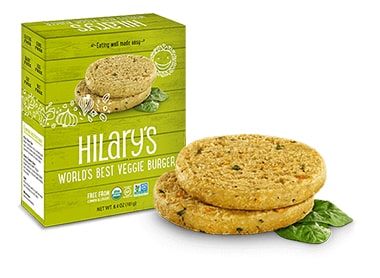
The veggie burger was first offered in a natural foods restaurant in London, England in 1982 by Gregory Sams. A great start, but since then meat-alternatives have developed a reputation for being lousy. Veggie burgers and other products trying to simulate meat have an infamous reputation of being tasteless and having a gross texture. They are jokingly compared to the cardboard of the box they are coming in.
Increasing amounts of people have been eating less meat despite the lack of vegan alternatives. One percent of people identified themselves as vegans in 1970, but now is six percent of people. The demand for meat alternatives is growing, and the market is expected to be over $60 billion worldwide.
Founding insight: Meat is rotten for us all.
Ethan Brown’s look into the harmful effects of livestock put him on the search for an alternative.
Before Beyond Meat, Ethan Brown was in the energy sector. He viewed climate change as the biggest challenge man faced, so he went to university and sought to work for an energy company. He worked for Ballard Power Systems, a company that works on fuel cells.
He noticed that everyone was genuinely interested in climate change; they would gather for conferences to make our energy use just a little more efficient or develop alternatives to the gas-powered car.
But then a study endorsed and published by the UN pegged livestock’s contribution to human-made climate change at 51% (this number has been since disputed, but it is still high). The study changed Ethan Brown’s life; he changed directions and sought out a viable alternative to beef.
Ethan had been raised with an appreciation for animals. His father had a hobby farm that raised livestock. He noted the difference in treatment of their family’s pets versus their livestock; they treated their family dog as a sentient being but the cattle as a means of production.
He noticed that he wasn’t alone. He had invested in vegan restaurants and noted that the patrons were regular folks in every way except that they chose not to eat meat. Ethan realized this could be a mass market.
The search for a meat alternative is on.
So we are not going to get people off meat. Can we give them an alternative?
Ethan Brown’s upbringing made him appreciate the deep roots meat consumption has in the western culture. He knew that chastising people for wanting meat was a losing battle without a genuine alternative.
Ethan also realized that there is nothing in meat that isn’t found in other places. Animals do not synthesize anything special for the growth of their muscles. If you could extract the proteins that meat is made off and lay them down in the same fibrous structure, we observe in when we look at meat in a microscope.
The entrepreneur knew that there were two up-and-coming methods for arranging proteins like meat:
- lab-grown meat
- in vitro meat
- extracting and organizing proteins from plants
He chose the third because it seemed like it would be the easiest sell to consumers of natural meats.
Ethan started to talk to anyone who was researching an alternative to meat. He visited the University of Missouri, where he found professors Fu-hung Hsieh and Harold Huff, who had been working on recreating chicken from soy since the 1980s.
Ethan worked with the researchers for a couple of years to develop a viable product. He exhausted all his resources and personal savings and was forced to license the technology to start the company.
“That’s an awesome feeling by the way,” Brown told Entrepreneur.com, “to go from having a totally stable corporate existence where you have a 401(k), savings and everything’s totally organized to complete [expletive] chaos. Pretty strange experience, but it helps to keep you motivated for sure.”
Beyond Chicken
The company’s first product.
The company focused its development work on mouthfeel: the feeling someone gets from the texture when chewing meat. They thought they were close, so they launched Beyond Meat: Chicken-Free Strips. The protein realignment process made a plant-based product that was convincingly similar to the fibrous texture of chicken.
Whole Foods was the first to carry Beyond Meat’s product April of 2013. Brown credits Whole Foods as being a true partner. Whole Foods helped develop the products, they took risks on offering it in high profile places in the store, and they promoted the product. Brown believes Whole Foods has been and continues to be deeply committed to the success of Beyond Meat.
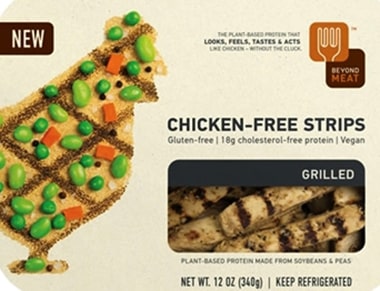
Ethan Brown was always upfront that Beyond Chicken was a starting point. Ethan mentions in multiple interviews in 2014 that the product was a convincing substitute for chicken in dishes, but Beyond Chicken convinced no one in a side by side taste test with chicken breast.
Beyond Meat discontinued the substitute chicken product in May of 2019. The chicken product was significantly behind the new generation of beef and pork like products. They were worried the sub-par chicken product would damage the brand. People might base their opinion of Beyond Meat based on the chicken-like product and never try the other, superior products.
Many vegans were fans of the product, and they were left with this statement from the company:
“At Beyond Meat, we’re constantly innovating and renovating our products based on consumer feedback. Unfortunately, our Chicken Strips weren’t delivering the same plant-based meat experience as some of our more popular products, like the Beyond Burger and Beyond Sausage. But there’s good news. We have a team of chefs and scientists who are working on getting an even better, tastier version of Beyond Chicken Strips back on retail shelves and restaurant menus as soon as possible. Until then, we hope you enjoy the Beyond Burger, Beyond Sausage, and Beyond Beef Crumbles, and some new products we have in the works for 2019!”
Beyond Beef And the Beyond Burger
The company’s second, and far more successful product.
Beyond Meat had a beef-like crumble product shortly after launching the chicken product; the two product were in Whole Foods refrigerators in 2014. The crumble was a perfect substitute for tacos.
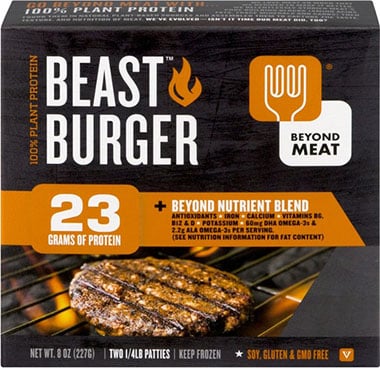
The Beast burger patty was a code name for what we now know as the Beyond Burger. It was fundamentally different than their original beef product. It grilled in the same way as traditional all-beef burgers, so it was a simple substitute for meat-eaters in their summer barbecues. Unfortunately, it did not launch for barbecue season of 2014 because they struggled with getting the moisture content right so it would cook effectively without sacrificing flavor.
The Beast Burger was available in Whole Foods nationwide in February 2015. The product had more protein and nutritional iron than a traditional beef burger, which was a God-send to vegans. The protein and iron also gave the product some credentials that made it seem “manly.” The design of the box was very manly. The nutrition facts spoke to their “Future of Protein” marketing. They were trying to make the case that vegan athletes not only exist but thrive.
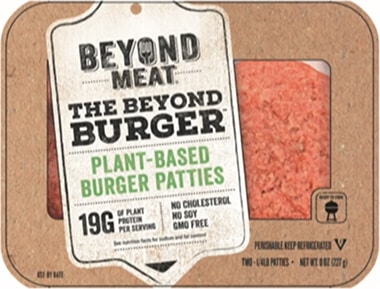
Beyond Meat continued to iterate on their beef substitute products and are so happy with the progress and the market demand that they are all in on them. They discontinued the chicken-like product because the enthusiasm for it did not compare to the beef product. Four of their six product SKUs are beef-like products, the others being pork sausages.
Beyond Meat’s Brand Strategy
Help the carnivores make better choices, and the vegans will follow.
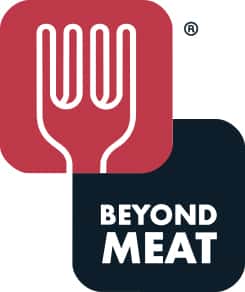
Even though the number of vegetarian and vegans were growing, the veggie burger market was stagnant in 2013 when the company started launching products. There was only 0.5% growth in the veggie burger category; the legacy competitors had to have amazingly poor strategies not to grow when demographics were in their favor.
It was clear that Beyond Meat needed a dramatically different marketing strategy than the incumbents. The classic veggie alternatives to meat had such a bad reputation that Beyond Meat needed to distance themselves in every way possible. Where did they go? As close to the real meat products as retailers and regulators would allow them.

The early packaging designs did not have any vegetables to be found; a grocery shopper could honestly pick up a box of The Beast Burgers mistaking them for traditional burgers. Having the words “meat” and “beast” in the brand names is no accident.
Beyond Meat’s marketing strategy is to convert carnivores into occasional vegans. They did not service the vegan and vegetarian markets as traditional players did. They knew that vegans and vegetarians would use and love the product regardless if they targetted them because the products were so superior to what they were used to. Word of great food travels quickly through the tight-knit vegan community.

Athlete and Celebrity Endorsements
There is nothing anemic about this plant-based burger.
Part of our culture’s fascination with meat comes from the association with meat and muscles. We see meat-eating and athleticism go hand in hand. On the flip side, we imagine vegans and vegetarians to be thin and unhealthy, continually struggling to get enough protein and iron in their diet.
None of that is true. Our bodies are amazingly adaptable and can do amazing things with whatever diet you give it. But nonetheless, it is a perception Beyond Meat need to get over to convince carnivores to throw plant base burgers on the grill.
They see endorsements from celebrities, particularly athletes, as the way to make that case. Nearly from the beginning, founder Ethan Browne talked about their products being the future of protein. In 2015, Beyond Meat launched its first marketing campaign called “The Future of Protein.” Baseball player David Wright was the first to endorse the brand. Other athletes who were featured on the brand’s home page and shared sponsored content were: J.J. Redick, Maya Moore, April Ross, Eric Bledsoe, Maggie Vessey, and Tia Blanco.

In 2019, Beyond Meat has doubled down on athlete endorsements. Kyrie Irving, the Boston Celtics point guard, not only endorses the product but is featured in a TV spot for Beyond Meat. The basketball player is a genuine brand ambassador for them.
Stun Creative and Rebranding for 2019
Stun becomes the marketing and media agency of record, and the company rebrands.
Beyond Meat had used the cute bull-in-a-cape icon as a design element for years before, but they rebranded to have it as their primary logo in February of 2019. The rebrand corresponds in time to Stun was named as Beyond Meat’s agency of record. Stun Creative is a Los Angelas based firm founded by Mark Feldstein and Brad Roth.

Since Stun has gotten involved, the brand has softened in design. The packaging design is moving from a “Texas steakhouse” look, to a look of quiet confidence with a black and green on white color scheme. The packaging before was akin to a hippy teen trying to dress like the jocks so he could make the football team. Now the packaging and branding, in general, is far more comfortable and confident with what it is: a plant-based burger that is as good or better than it’s real meat alternatives. This quiet confidence goes through the media and advertising, standing on the celebrity and athlete endorsements. It is what it is.
Beyond Meat builds its brand in foodservice.
Restaurant patrons become customers when they see Beyond Meat on the menu mentioned by name.
A brand strategy that Beyond Meat employs that is innovative and remarkably effective is having its foodservice customers promote the brand to their patrons. When a restaurant uses a Beyond Meat product in one of their dishes, the brand is often on the menu boards or on the menu itself.
Many of the manufacturers of the products in your pantry right now also make products for the foodservice industry: restaurants, hospitality, and catering. I work with a national brand whose product is cooked in most of the well-known restaurant franchises in Canada, but their product is not called out by name. A menu would be unreadable if they called out every ingredient’s brand. It also may cheapen the restaurant experience if this particular meal is made with the same ingredients you use at home.
Beyond Meat plays by a different set of rules; displaying the Beyond Meat logo is an asset because their products are perceived as high quality and innovative, and that will reflect well on the restaurant. Veggie burgers and meat-alternatives were so mediocre for so long that restaurants need the Beyond Meat brand to distinguish their vegetable burgers as something people actually want.
These partnerships build brand equity for Beyond Meat. The products are promoted and sampled in all of the restaurants, as well as being co-promoted in advertisements for the restaurant franchises. All of this brand building on the foodservice side drives people to try the retail products at home.
Beyond Meat’s Competition
Competition in the plant-based meat market.
For a long time, Beyond Meat was the only game in town for someone looking for a realistic substitute for meat. But now Beyond Meat faces competition from Impossible Foods, Lightlife, and store brands.
Beyond Meat vs. Impossible Foods
Impossible Foods is also a California based company that was founded in 2011, a few years after Beyond Meat. Impossible was founded when Standford biochemistry professor, Patrick O. Brown, learned about the impact animal agriculture was having on the planet, and took a sabbatical to promote the problem. When he struggled to raise awareness, he decided working on an alternative to meat would do the most good. Brown and his colleagues launched the Impossible Burger in 2016, and have since iterated with the Impossible Burger 2.0.
The Impossible Burger and the Beyond Meat Burger are very similar, rearranging plant proteins in a way like meat. Impossible derive their protein from soy where Beyond extracts their protein from peas. Impossible Food’s claim to fame is their natural sourcing of heme molecules; this molecule with an iron atom in the middle is what makes blood red. It turns out it is an essential part of what makes protein cook and taste like meat. Impossible Foods extracts these hemes out of the roots of soy plants.
Beyond Meat vs. Lightlife
Lightlife is a long-standing provider of vegetarian and vegan meat substitutes. In 1979, they converted a car wash into the headquarters of Tempeh Works. They provided the first mainstream tempeh product. Tempeh is fermented soy that is comparable to tofu. Tempeh Works became Lightlife in 1984.
Now, Lightlife is owned by Maple Leaf Foods. They have a burger product that is very similar to the Beyond Meat Burger; both burgers use pea protein. They also have a ground product and sausages.
What does the future hold for Beyond Meat?
The growth since the IPO has been staggering, but the competition is to become fierce.
Since the IPO and the expansion into Canada and other global markets, the Beyond Meat brand has grown leaps and bounds. But can it keep up the blistering pace now that they are a target and a threat?
Positioning the brand as close to real meat as possible has been a key to the company’s success, but competitors are using regulators and retailers to stop claiming that they are meat.
The cattle growers in Canada have complained with the Canadian Food Inspection Agency (CFIA) to prevent Beyond Meat from marketing their products as “plant-based meat.” They argue that meat as a legal definition and in common parlance means animal flesh. Plant-based meat is not a thing because if it is from a plant, it cannot be meat by definition.
I expect many more of these complaints now that Beyond Meat is out of hiding and starting to crack into the mainstream.
Cover Photo by Skitterphoto from Pexels
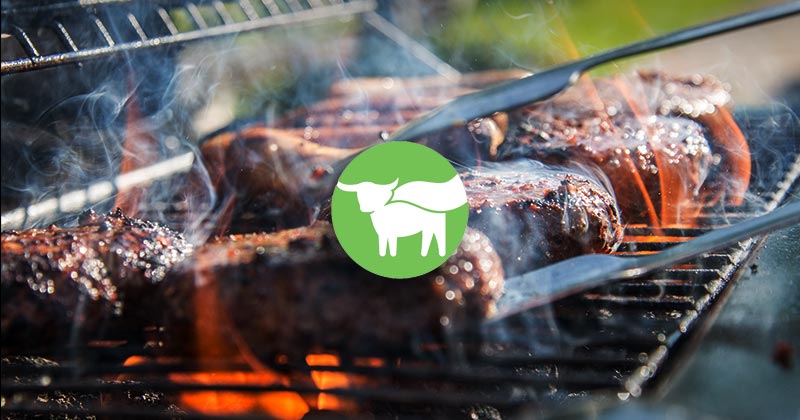
Leave a Reply